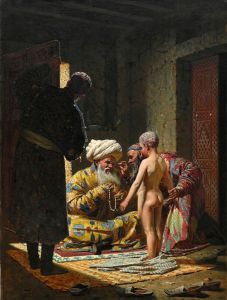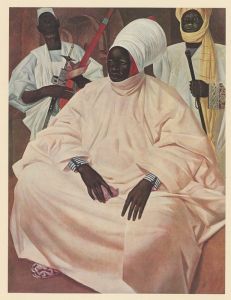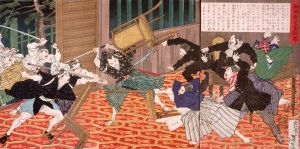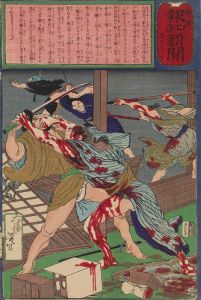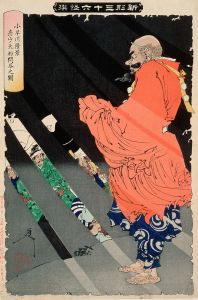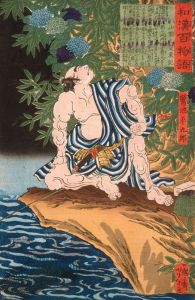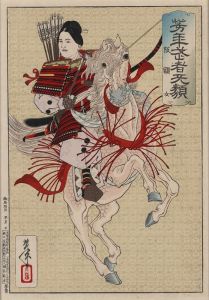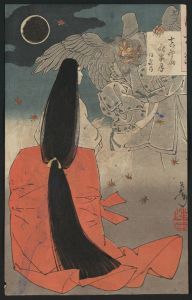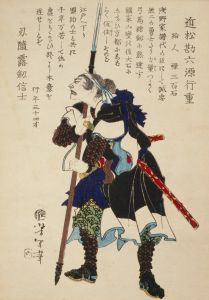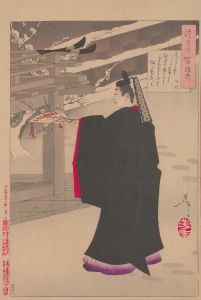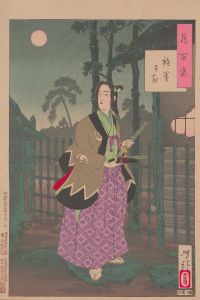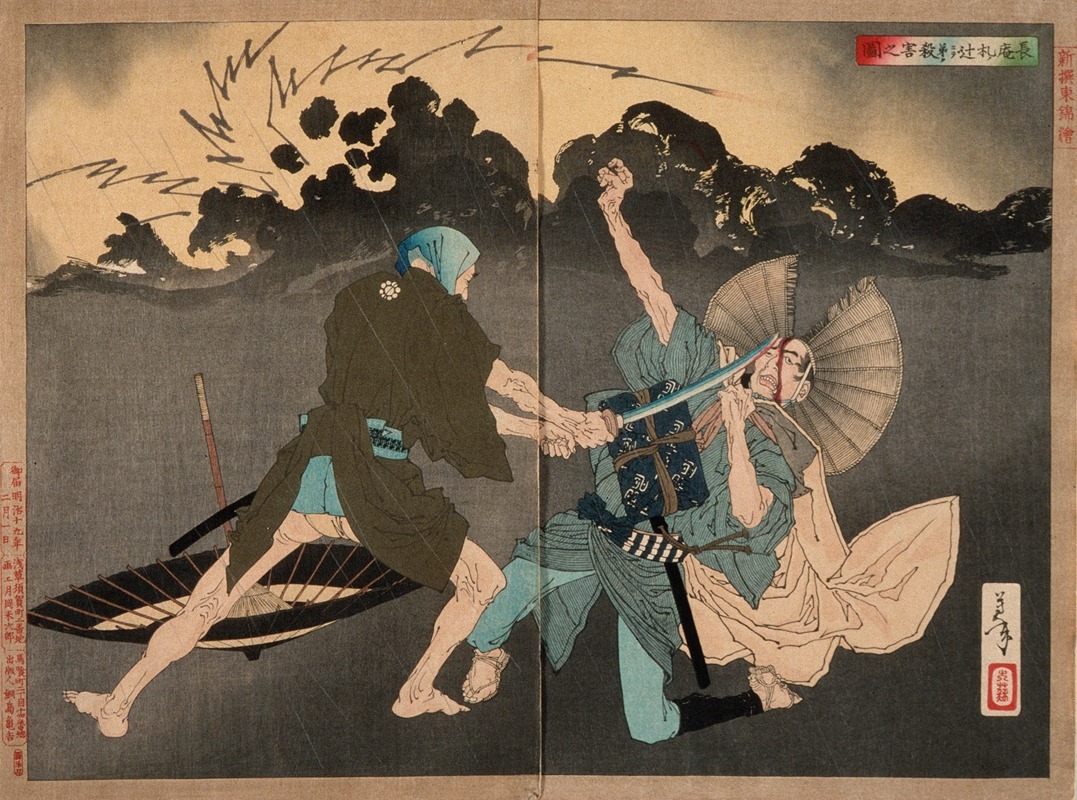
Murai Chōan Killing His Younger Brother at the Crossroads
A hand-painted replica of Tsukioka Yoshitoshi’s masterpiece Murai Chōan Killing His Younger Brother at the Crossroads, meticulously crafted by professional artists to capture the true essence of the original. Each piece is created with museum-quality canvas and rare mineral pigments, carefully painted by experienced artists with delicate brushstrokes and rich, layered colors to perfectly recreate the texture of the original artwork. Unlike machine-printed reproductions, this hand-painted version brings the painting to life, infused with the artist’s emotions and skill in every stroke. Whether for personal collection or home decoration, it instantly elevates the artistic atmosphere of any space.
Tsukioka Yoshitoshi (1839–1892) was a renowned Japanese artist known for his work in ukiyo-e, a genre of woodblock prints and paintings that flourished in Japan from the 17th through the 19th centuries. Yoshitoshi is often celebrated for his innovative approach to traditional themes, his dynamic compositions, and his ability to capture the complexities of human emotion and historical narratives.
One of Yoshitoshi's notable works is "Murai Chōan Killing His Younger Brother at the Crossroads," which is part of his series "New Forms of Thirty-Six Ghosts" (Shinkei Sanjūrokkaisen), created between 1889 and 1892. This series is a collection of prints that depict various supernatural and ghostly tales from Japanese folklore and history, showcasing Yoshitoshi's interest in the macabre and the mystical.
The print "Murai Chōan Killing His Younger Brother at the Crossroads" illustrates a dramatic and tragic event rooted in historical and legendary narratives. Murai Chōan was a samurai during the Sengoku period, a time of social upheaval, political intrigue, and near-constant military conflict in Japan. The story depicted in the print involves a fratricidal act, where Chōan kills his younger brother. This act is often interpreted as a reflection of the intense familial and societal pressures faced by samurai during this tumultuous period.
Yoshitoshi's depiction is notable for its emotional intensity and the way it captures the psychological tension of the moment. The composition likely emphasizes the dramatic confrontation between the two brothers, set against a backdrop that enhances the sense of isolation and inevitability. Yoshitoshi's use of color, line, and form would have been employed to heighten the emotional impact of the scene, drawing the viewer into the narrative and inviting them to ponder the motivations and consequences of Chōan's actions.
The "New Forms of Thirty-Six Ghosts" series, including this print, is significant not only for its artistic merit but also for its cultural and historical insights. Yoshitoshi's work often reflects the anxieties and transformations of the Meiji era, a time when Japan was rapidly modernizing and grappling with its traditional identity. Through his exploration of ghostly and supernatural themes, Yoshitoshi was able to comment on the enduring power of the past and the ways in which historical narratives continue to shape contemporary consciousness.
Yoshitoshi's prints, including "Murai Chōan Killing His Younger Brother at the Crossroads," remain influential in the study of Japanese art and culture. They offer a window into the complexities of human emotion and the rich tapestry of Japanese folklore and history. His ability to blend traditional techniques with innovative storytelling has cemented his legacy as one of the last great masters of the ukiyo-e tradition.





